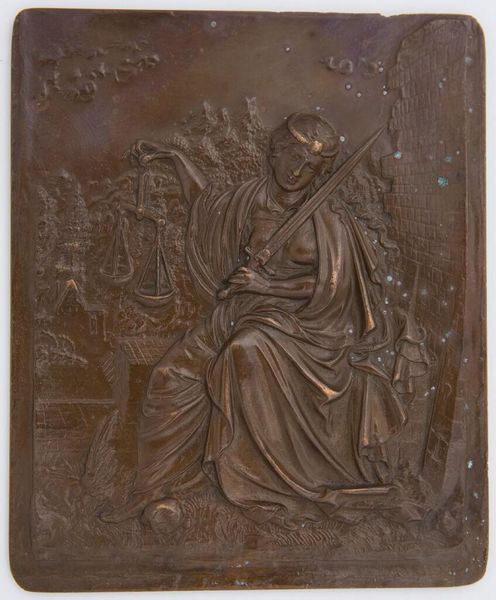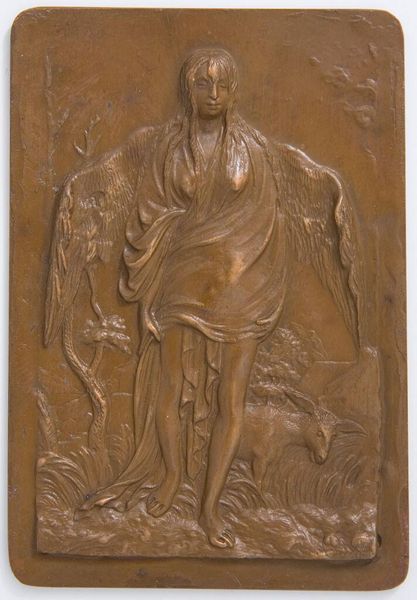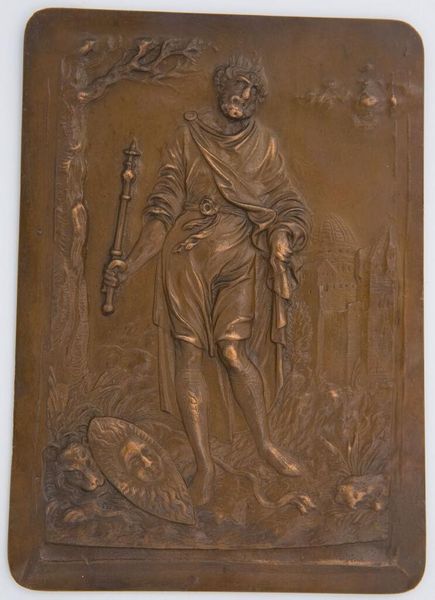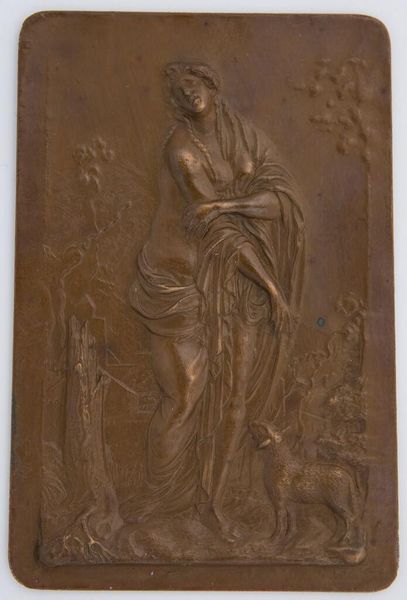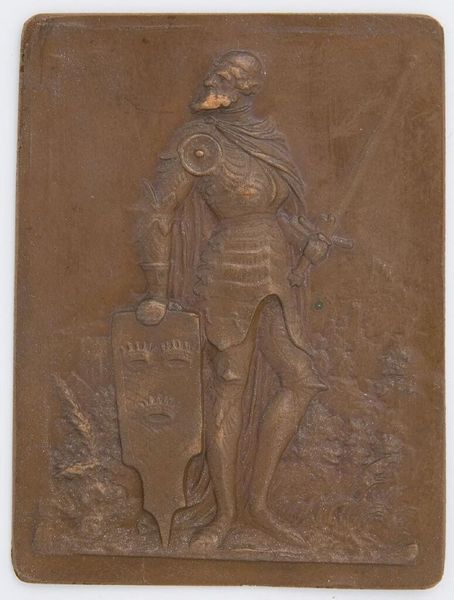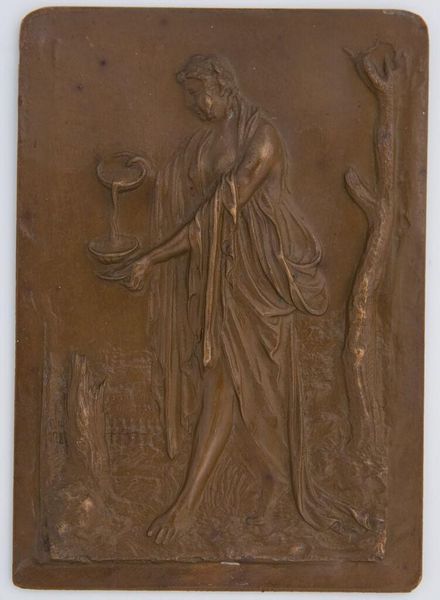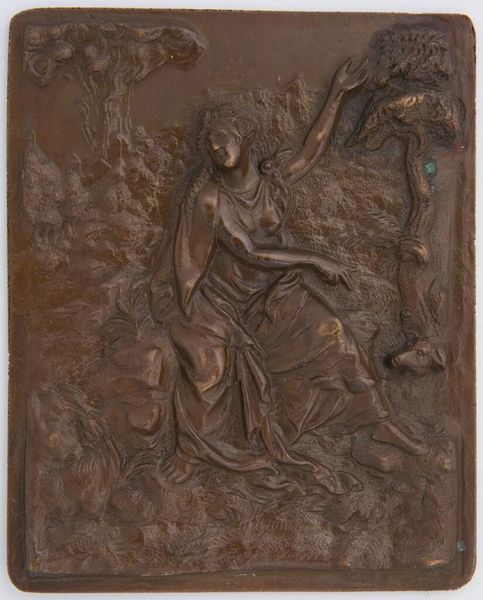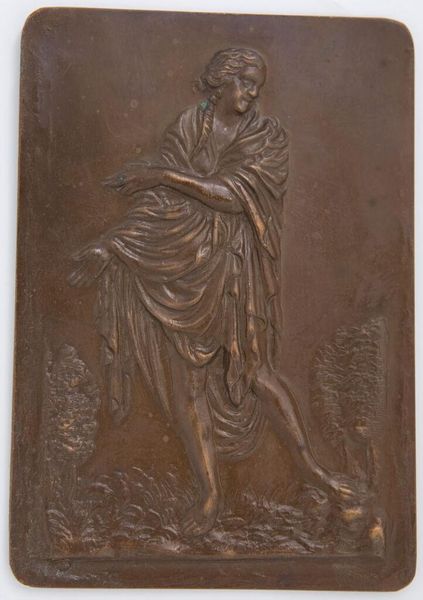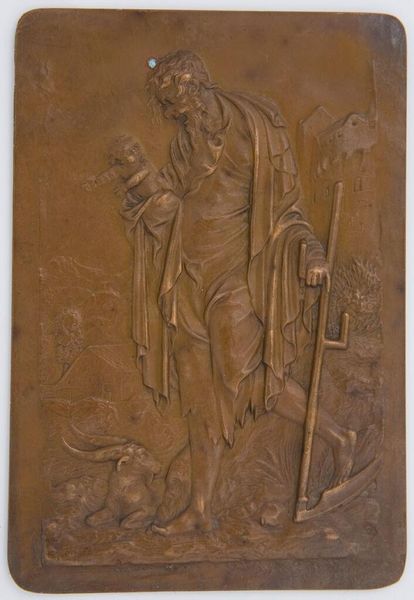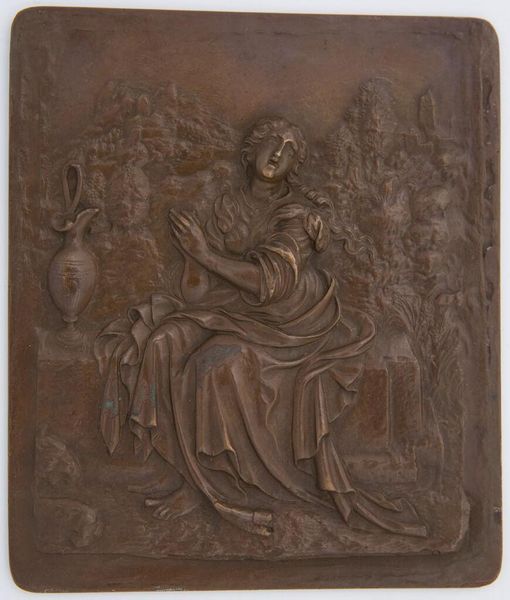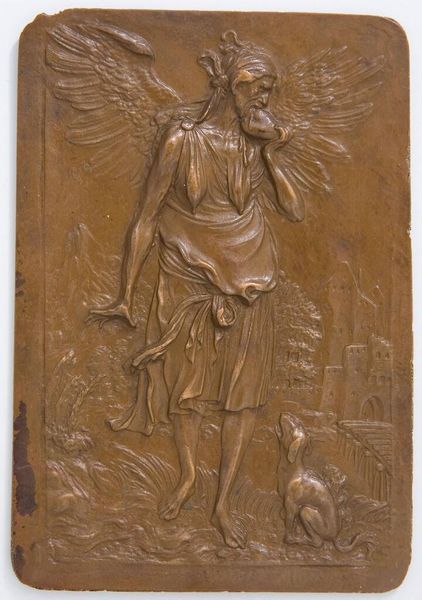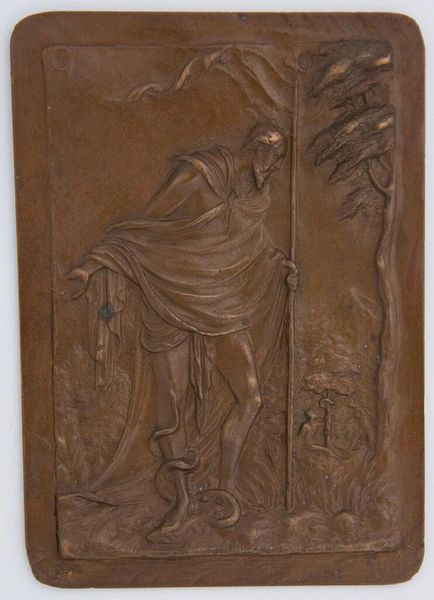
Tuiscon (?), from the series "The Twelve Oldest German Kings" early 20th century (original from c.1540)
0:00
0:00
Dimensions: 5.5 x 4.1 cm (2 3/16 x 1 5/8 in.)
Copyright: CC0 1.0
Curator: Welcome. We’re looking at a small bronze plaque, 5.5 by 4.1 cm, from the series “The Twelve Oldest German Kings,” titled Tuiscon (?), made by an anonymous artist. It's part of the collection at the Harvard Art Museums. Editor: It's striking how the artist achieved so much detail in such a diminutive format. I'm curious about the casting process itself. Curator: These plaques were often produced as part of larger decorative or commemorative projects. The figure of Tuiscon, one of the purported founders of the German people, was popular during periods of nationalistic fervor. Editor: Right, but what kind of labor went into this? The chasing and finishing of the bronze surface would require skilled hands. Was this piece part of an artisanal workshop's production, or something more unique? Curator: Good questions. The mass production of such imagery speaks to a broader socio-political context, where the creation of national myths was actively promoted and consumed by a specific audience. Editor: Examining it from a material perspective makes me consider who would've owned or displayed it. Curator: Precisely. It’s a potent reminder that even seemingly small objects can reflect larger cultural and historical trends. Editor: Seeing this detailed work helps me value it not just for what it represents, but for the making.
Comments
No comments
Be the first to comment and join the conversation on the ultimate creative platform.
